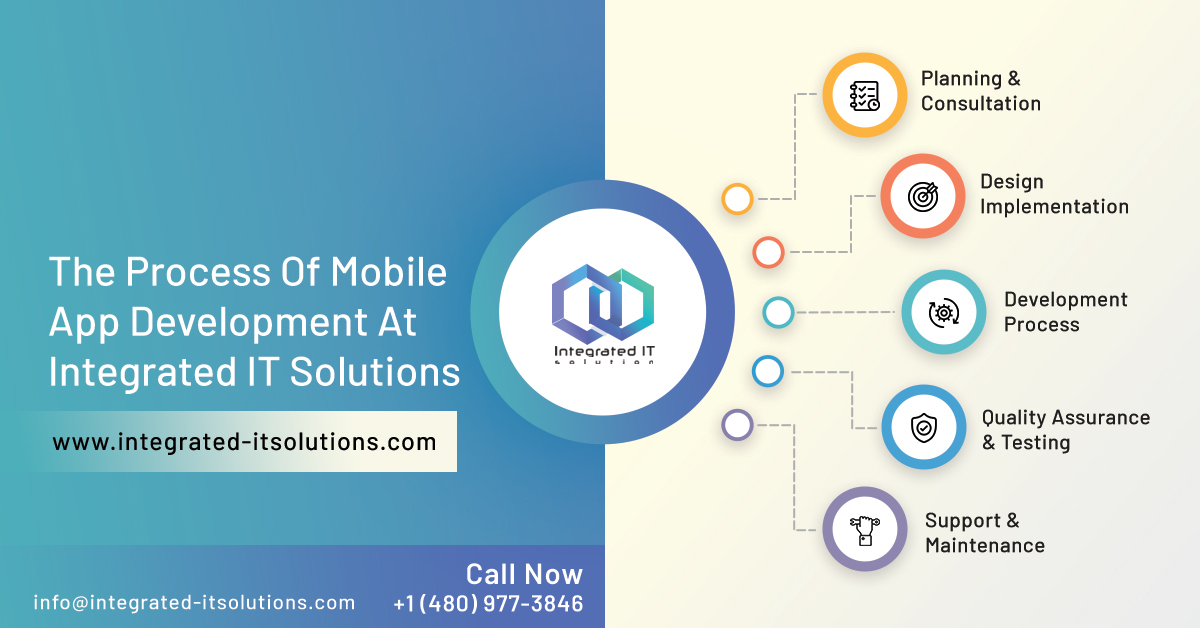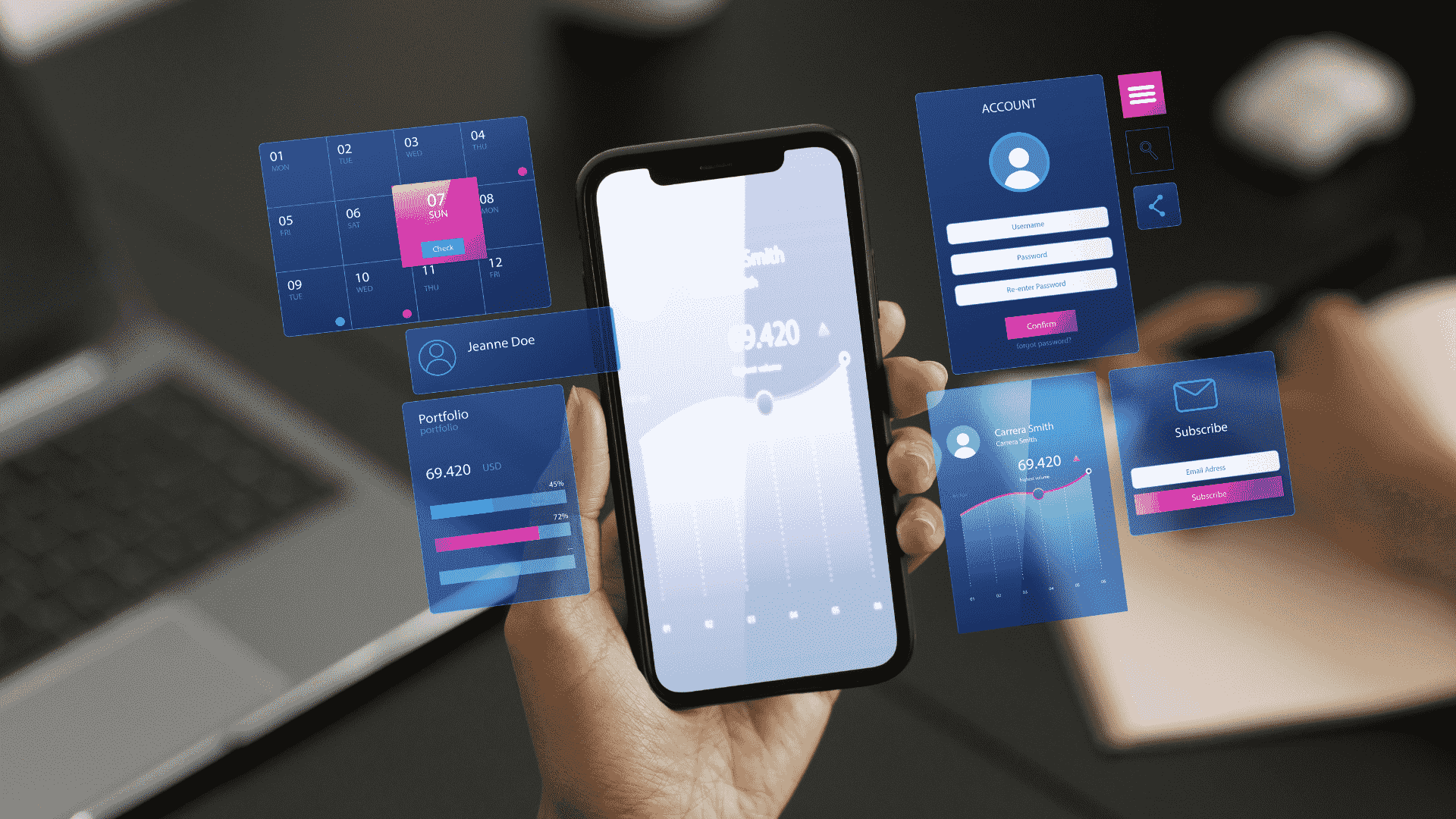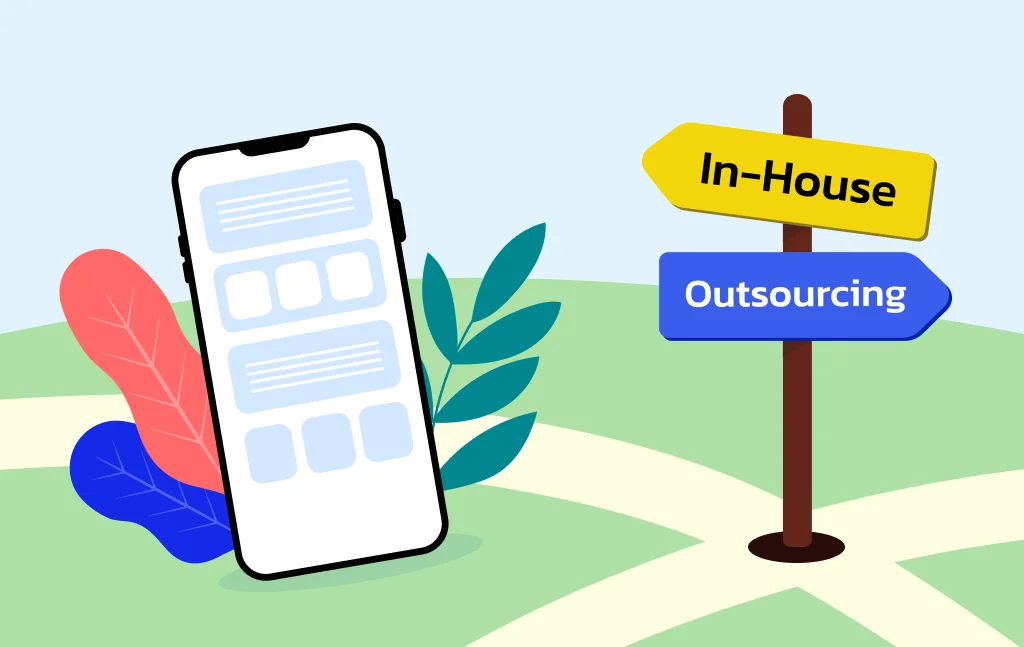Mobile app development has become the ultimate mode of convenience for us for the past few years. The incorporation of new ideas, technologies, and marketing strategies have transformed mobile apps into a valuable commodity. Today, we see hundreds of new mobile apps developed every day. The mobile app development process is not as simple as it seems.
Though, we get excited by seeing the number of mobile apps present on both the Google play store and app store. But it is a very complex and sophisticated process to develop a highly functional mobile app equipped with tons of features. At Integrated IT Solutions, we follow the following steps of the mobile app development process to build robust and scalable mobile apps for valued clients.
Planning & Consultation
It is the most important part of the initiation of any project. This phase of the mobile app development process sets the foundation for a thorough and professional building of a new project. The involvement of stakeholders is mandatory in this process to fully understand the requirements of the respective project. The complete feasibility report of a project is created with the help of relevant departments and shared with clients. Proper documentation and consultation are done before the development process to avoid any confusion and misunderstandings in the future.
Design Implementation
The design represents another important aspect of modern mobile applications. It is impossible to aspect user interest in carelessly designed apps. The designing phase includes the creation of a complete front-end design with different user screens. The balance of creating visual harmony and functionality is always kept intact during this phase of development. The creation of an attractive and user-friendly interface sets the tone for the creation of a successful application. This phase helps to define the appearance and working of your future application.
Development
After the successful completion of the planning and design phases, we move on to the stage of development. The process of development gets underway to implement the desired functionalities in an aesthetic and user-centric design. The development team at Integrated IT Solutions has great expertise and experience in translating complex business requirements into a working application.
Quality Assurance & Testing
Now it’s time to check the complete functionality of a mobile app that whether it is working according to the expectations or has some issues. The process of quality assurance and testing ensures the quality of the mobile app development process. It helps to build highly efficient and robust mobile applications that will work seamlessly according to a set of requirements provided by the clients. Testers carry out both manual and automated testing to confirm proper functioning.
Support & Maintenance
The process of mobile app development is a never-ending phenomenon. Continuous evaluation and checks have to be made on regular basis even after the release of a respective mobile application. The usage of apps reveals any flaws or shortcomings in the future. Moreover, new features are required to add on regular basis to keep the app up to date. Support and maintenance take care of these issues and updates to ensure the consistency of mobile applications.
FAQs
Is the mobile app development process complete after the app is launched?
No, the process is ongoing. We provide continuous Support & Maintenance to address any potential flaws, add new features, and keep the app up-to-date, ensuring its consistent performance and relevance.
How important is design in the mobile app development process?
Design is crucial in creating an engaging user experience. We focus on creating a visually appealing and user-friendly interface, balancing aesthetics and functionality to ensure the app captures user interest and provides a seamless experience.
How does the mobile app development process contribute to my business?
A well-developed mobile app enhances user engagement, improves customer service, and can significantly contribute to your business’s growth and success.




